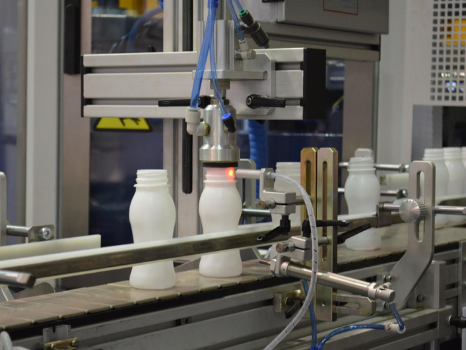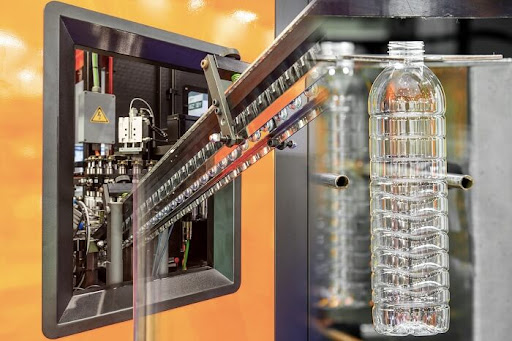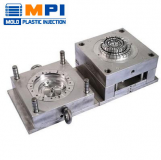Introduction
Get ready to dive into the exciting world of making things, where understanding how to blow mold is super important. One big thing to know is how to pick the right kind of plastic. This article is like a cool guide that explores all the different plastics out there, what makes them special, and how they fit into the cool process of blow molding. We’re going to take you on a tour around the world of plastics, illustrating their properties as well as how they relate to the magnificent art of blow molding. You’ll explore whatever you need to know about these substances and the essential role they play in making incredible things. It’s like an exciting adventure. So buckle up for a ride into the world of making stuff, where plastics and blow molding come together in a way that’s both interesting and easy to understand!

What is blow molding?
Blow molding is a manufacturing technique employed to produce hollow objects, predominantly plastic containers and bottles. The process involves melting plastic material and shaping it into a hollow form by introducing air. Two primary methods exist: extrusion blow molding and injection blow molding. In extrusion blow molding, molten plastic is extruded into a tube (parison), which is then expanded by blowing air into a mold. Injection blow molding combines elements of injection molding and blow molding, beginning with the creation of a preform that is later blown into its final shape. This versatile manufacturing process is widely utilized for crafting lightweight, durable, and cost-effective plastic containers, playing a crucial role in the packaging and container industries by facilitating the production of items with diverse sizes, shapes, and complexities.
What type of plastic is used in blow molding?
In blow molding, an array of polymers are employed; the decision is made based on the particular needs of the finished product. The following are a few popular plastic kinds utilized in blow molding:
Polyethylene (PE): For making sturdy vessels like milking and laundry bottles, polyethylene with a high density (HDPE) is the ideal material. Low-density polyethylene (LDPE) takes the stage for more flexible wonders such as squeezable bottles and trusty plastic bags.
Polyethylene Terephthalate (PET): PET, the champion of clarity, dominates the scene in crafting crystal-clear plastic bottles for our favorite beverages like water, soda, and juices.
Polyvinyl Chloride (PVC): PVC steps into the spotlight for blow molding magic, creating items like bottles, containers, and tubes known for their clarity and chemical resilience.
Polypropylene (PP): PP plays a versatile role in blow-molded products, including bottles, containers, and even automotive parts.
Polycarbonate (PC): PC shines in the world of blow molding, producing durable and impact-resistant wonders like certain types of water bottles and containers.
Polyethylene Naphthalate (PEN): PEN takes the heat for bottles requiring high-temperature resistance, making it the superhero for hot-fill applications.
Each of these plastics is a star player in the blow molding game, offering distinct qualities tailored to the specific needs of the final product, whether it’s strength, flexibility, clarity, or resistance to chemicals and temperature changes. In the dynamic world of blow molding, these plastics take center stage, each with its own unique role in shaping the products we use every day.
What are the Key Considerations in Plastic selection?
Picking the right plastic for making cool stuff with blow molding is like putting together a superhero team—you need to think about lots of important things! First off, you want the plastic to be strong and tough if your creation needs to handle a lot of action. And hey, some plastics are like see-through magic, making your stuff look super cool (think of those clear plastic bottles for drinks). You also need to make sure the plastic can handle different temperatures and won’t get messed up by chemicals. Obviously, you also dislike it for being very costly. It’s like a puzzle where you also consider whether the plastic is good for the environment and follows all the rules. So, whether you’re making a water bottle, a toy, or something else, thinking about these things helps you pick the perfect plastic superhero for the job!
Find out more about blow molding
Find out more about blow molding by researching more and you will be able to acquire many unknown facts about blow mold. So go on now and start your journey, but wait, did you know what the ideal place is for your journey to learn about blow molding? We know what the ideal place is. you can visit the website of EX MOULD Co., Ltd., where you can find the exact things you need. Also, the website of EX MOULD Co., Ltd. provides professional plastic injection mold services. So go on now and continue your journey.

FAQs
What variables need to be taken seriously when selecting a plastic for blow molding?
Issues like cost, ecological impact, and durability have significance when picking a plastic for blow molding. Each plastic has unique characteristics, and understanding these is crucial for successful blow molding projects.
Is PET recyclable after blow molding?
Yes, PET is highly recyclable. Its widespread use in the production of bottles and containers aligns with recycling initiatives, contributing to a more sustainable plastic lifecycle.
How does the choice of plastic affect the blow molding process?
The choice of plastic significantly influences the blow molding process, impacting factors such as moldability, cooling time, and final product properties. Matching the plastic type to the intended application is vital for optimal results.
Can additives be used to modify the color of blow-molded products?
Absolutely. Additives like colorants not only alter the visual appeal of blow-molded products but also serve functional purposes. Exploring the possibilities of color modification enhances the aesthetic value of the final product.
Are there environmentally friendly options for blow-molded plastics?
Yes, there are environmentally friendly options. Some plastics, like bio-based and recycled materials, offer sustainable alternatives, minimizing the ecological impact of blow molding processes.
What impact can the price of plastic have on blow molding operations’ overall earnings?
The overall economics of blow molding operations are greatly impacted by the expense of plastics. Balancing performance and cost is essential to ensuring the project remains economically viable without compromising quality.
Conclusion
Navigating the world of plastics in blow molding requires a nuanced understanding of materials, processes, and considerations. This comprehensive guide aims to equip you with the knowledge needed to make informed decisions, fostering success in your molding endeavors.

